Tips for Reducing Low Back Pain
80% of adults in North America will have at least one episode of low back pain severe enough to lose time from work. It is one of the most common ailments in American society today.
In Americans younger than 45 years the most common cause of disability and doctor visits is for back complaints. Although many of these individuals will recover within 7 days, chronic back pain continues to rise dramatically.
Although lower back aches is universal and has been a part of our society forever, low back disability is a more recent epidemic.
The cost of back pains in the U.S. as a result of time lost from work and disability is estimated to be $75 billion per year.
7 Tips for Reducing Low Back Pain:
Your posture while sitting and standing has a huge effect on the pain and stiffness you are feeling in your back, shoulders, and even the neck area.
By strengthening your core musculature, along with the muscles of the middle back region you will begin to notice your posture improving.
Pilates exercises have been proven to improve your posture. It does this through the core strengthening exercises and body awareness that you will develop.
2. Strengthen The Core of the Body
The “Core” or trunk of the body, consists of the abdomen and back as well as everything from the shoulder girdle to the pelvic girdle. It is the powerhouse of the body from where all other movement originates.
Imagine your trunk or "core" as the base of a crane and your arms and legs as the long working lever of the crane. If you don't have a strong, stable base of the crane it will roll over as you begin to do work with the moving arm of the crane.
Pilates-based core exercises are a great way to focus on strengthening the deeper core muscles that surround and protect the spine and allow us to move the extremities of the body with more ease and efficiency.
3. Improving Flexibility of the Lower Extremities
Stretching exercises designed to stretch and elongate the muscles of the legs and lower back will help to prevent injuries by keeping the muscles supple and flexible.
Because the hamstrings and other muscles in the hip and pelvic region have attachments to the vertebra of the lower back.
If those muscles are tight and restricted in movement they can have a negative effect on your back.
Focus on stretching the hamstrings, quadriceps, and the muscles surrounding the hips to decrease your low back pain.
4. Weight Loss
If you are carrying around extra weight, even as little as 10 pounds can put an unhealthy load on your spine contributing to your back pain.
Through a consistent and well-planned diet and exercise program you can begin to lose those unwanted pounds and start feeling better about your body.
Find out how Pilates might help you lose weight.
5. Using Proper Body Mechanics
When bending over or lifting objects from the floor it is important to keep your spine in a safe neutral position with the abdominal muscles contracted so you don't end up with a lower back ache.
Put your weight back into your heels as you squat to pick something up. Make sure you bend at the knee, hip, and ankle. Keep the chest lifted and look out ahead of you.
Pilates exercises focus on strengthening the spine while standing, sitting, kneeling, or lying in this neutral position. This is the safest and healthiest way to work, exercise, and play without the risk of low back pain and injury.
6. Avoid Sitting for Long Periods
Work that involves sitting for long periods of time or driving equipment that vibrates can aggravate those muscles that cause most of our lower back pain.
Make sure you have an ergonomically correct chair and desk space and are sitting upright with your bottom up against the back of the chair and your shoulders stacked up over your hips as shown to the left.
Using an exercise ball for a chair forces you to sit straight and tall and you get a little core workout at the same time.
Lose Your Back Pain Today!
7. Long–Term Exercise Program
Adhering to a regular long term exercise program that involves the aspects mentioned above such as: core strengthening, flexibility, postural exercises, and 30 minutes of cardiovascular exercise most days of the week will contribute to a healthier spine and a happier you!
Leave Tips for Reducing Low Back Pain and find more ways Pilates can help with your back health.
Recent Articles
-
Pilates after Total Knee Replacement
Apr 23, 20 06:20 PM
It's 2 yrs.post op since I had total knee replacement in both knees. In order for them to last it's recommended that you lift not more than 25 lbs. Pilates -
SI Joint Pain Improved with Pilates!
Aug 11, 17 12:29 AM
Dear Jennifer, I just wanted to reach out and thank you for dramatically improving and changing my life. About a year ago, I woke up in debilitating -
Hip pain after 4 months of Reformer Pilates
Jul 12, 17 06:44 PM
Hi, I had a total right hip replacement 8 months ago; I rehabbed really quickly, although I was also (and still am) dealing with L4 spondylolisthesis.
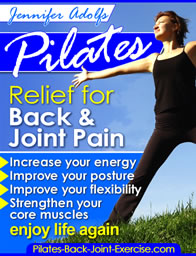 | Get Instant Access to Loads of Color Pictures, Postures, and Information Designed to Increase Comfort and Happiness. Learn to Enjoy Life Again! Learn More! |

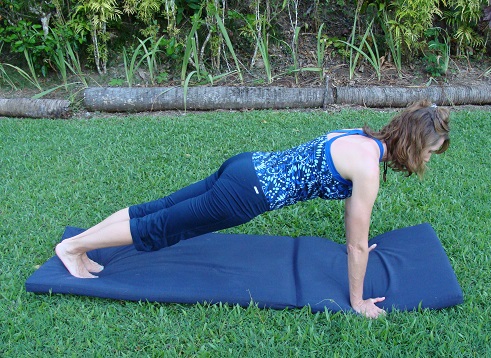
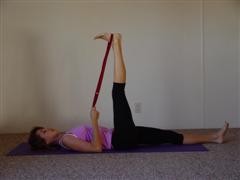
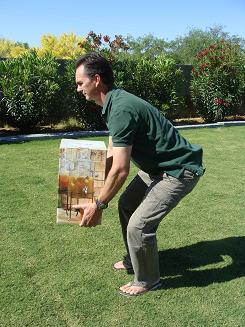
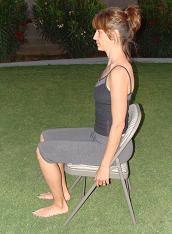

New! Comments
Have your say about what you just read! Leave me a comment in the box below.